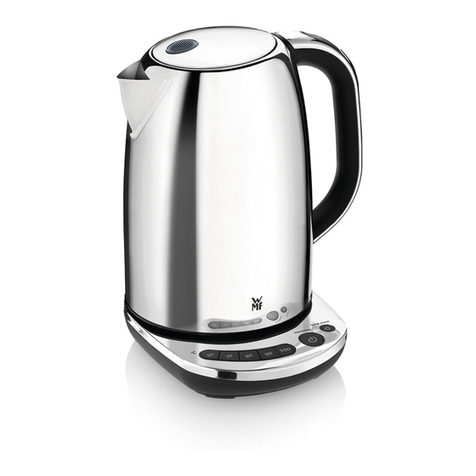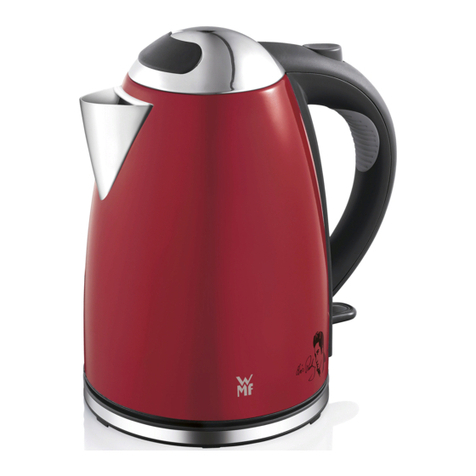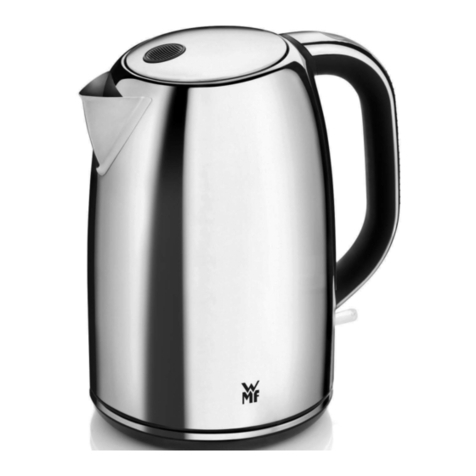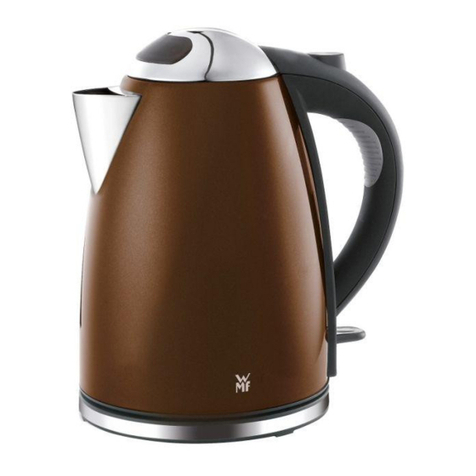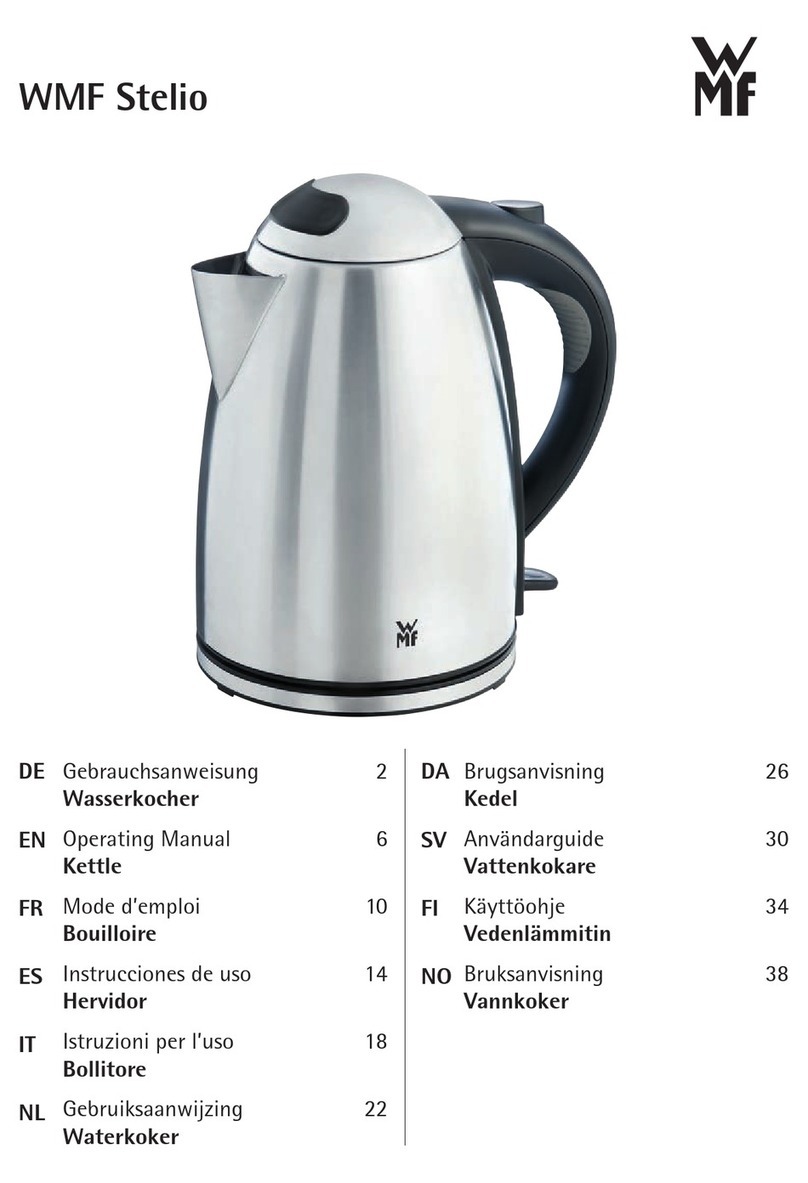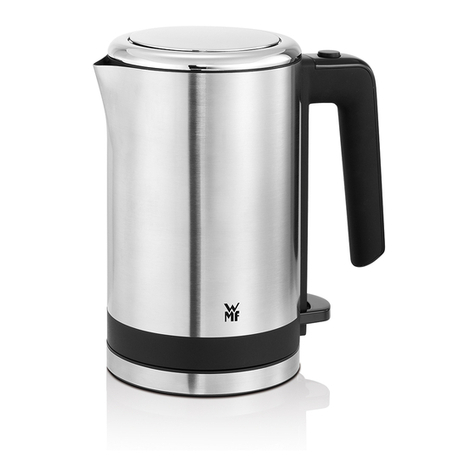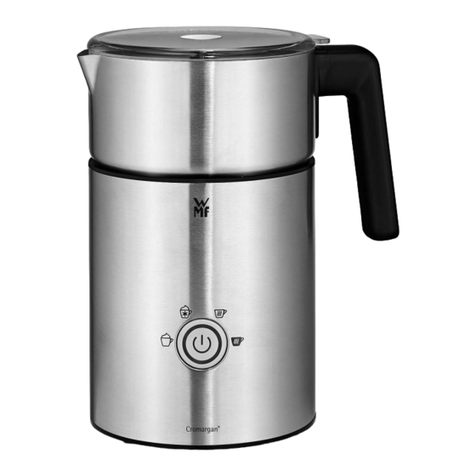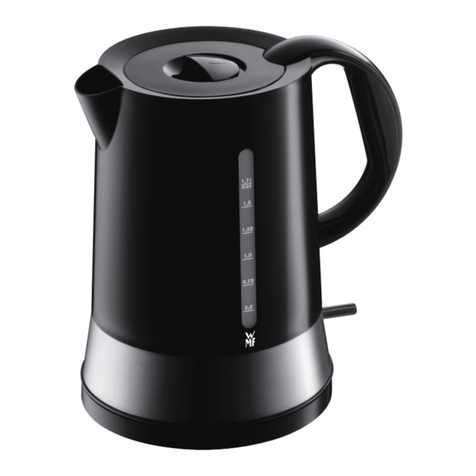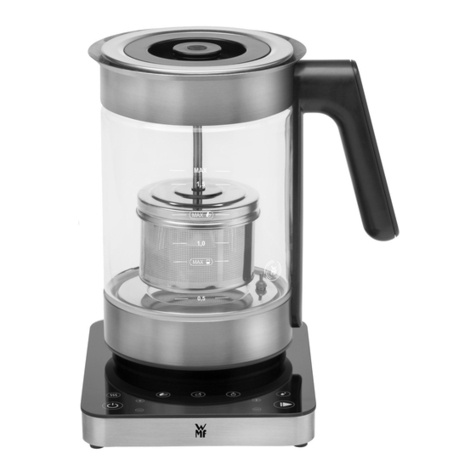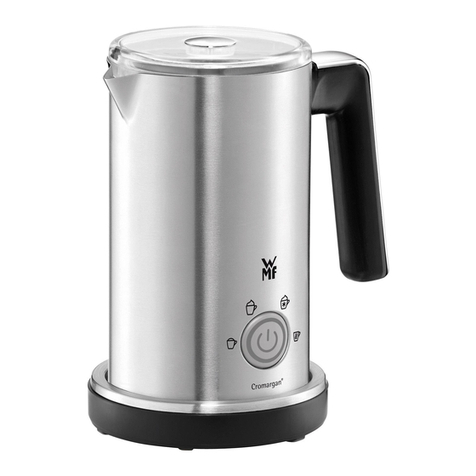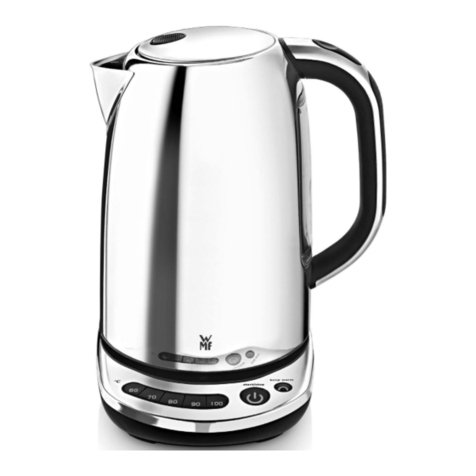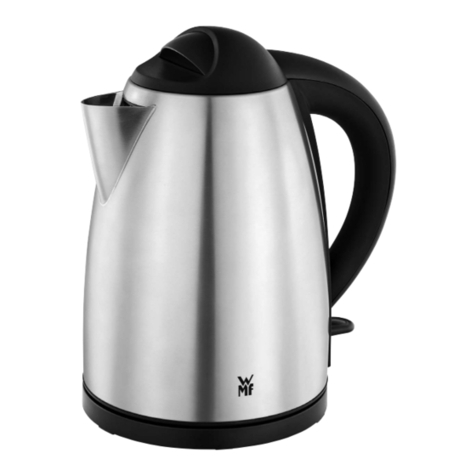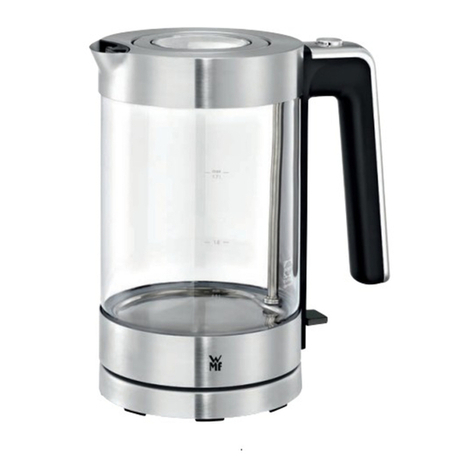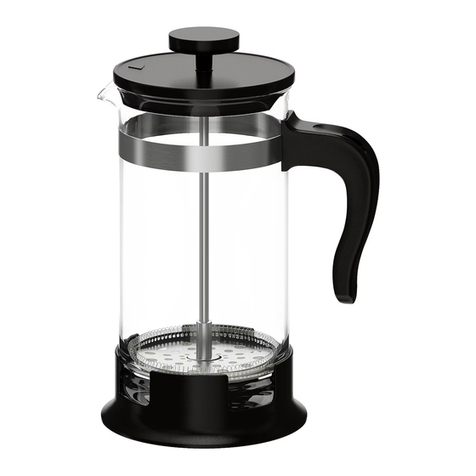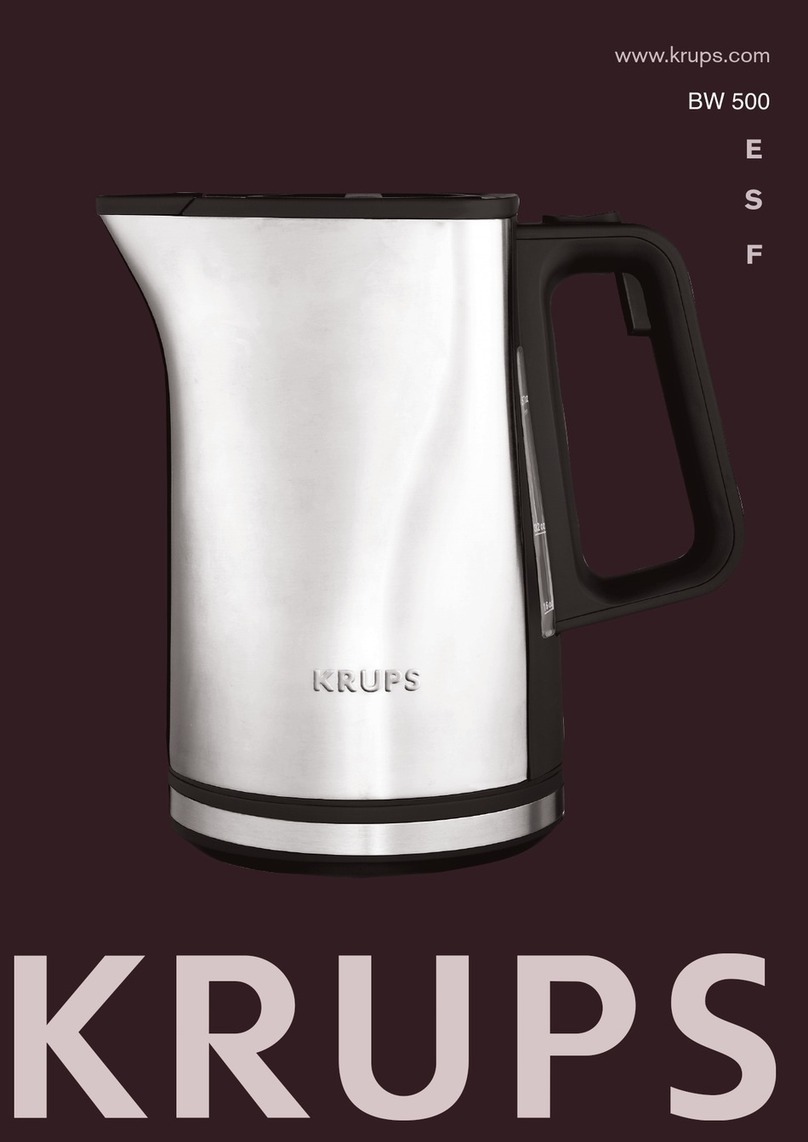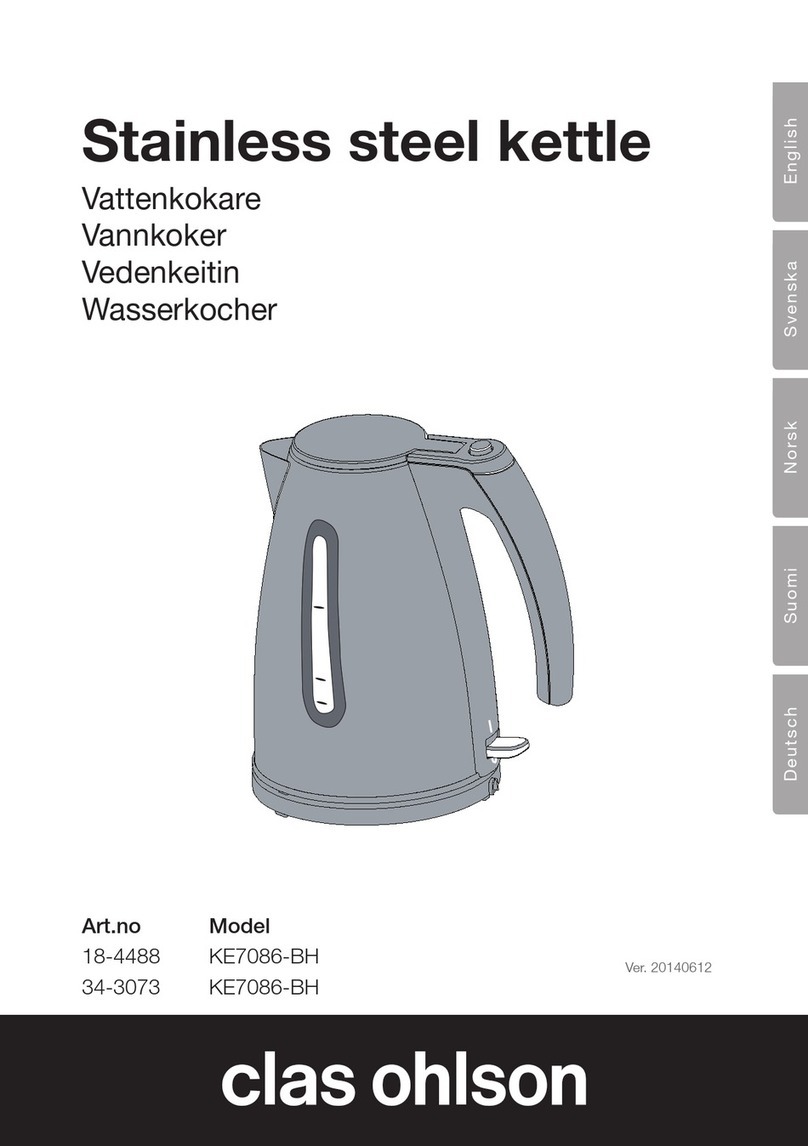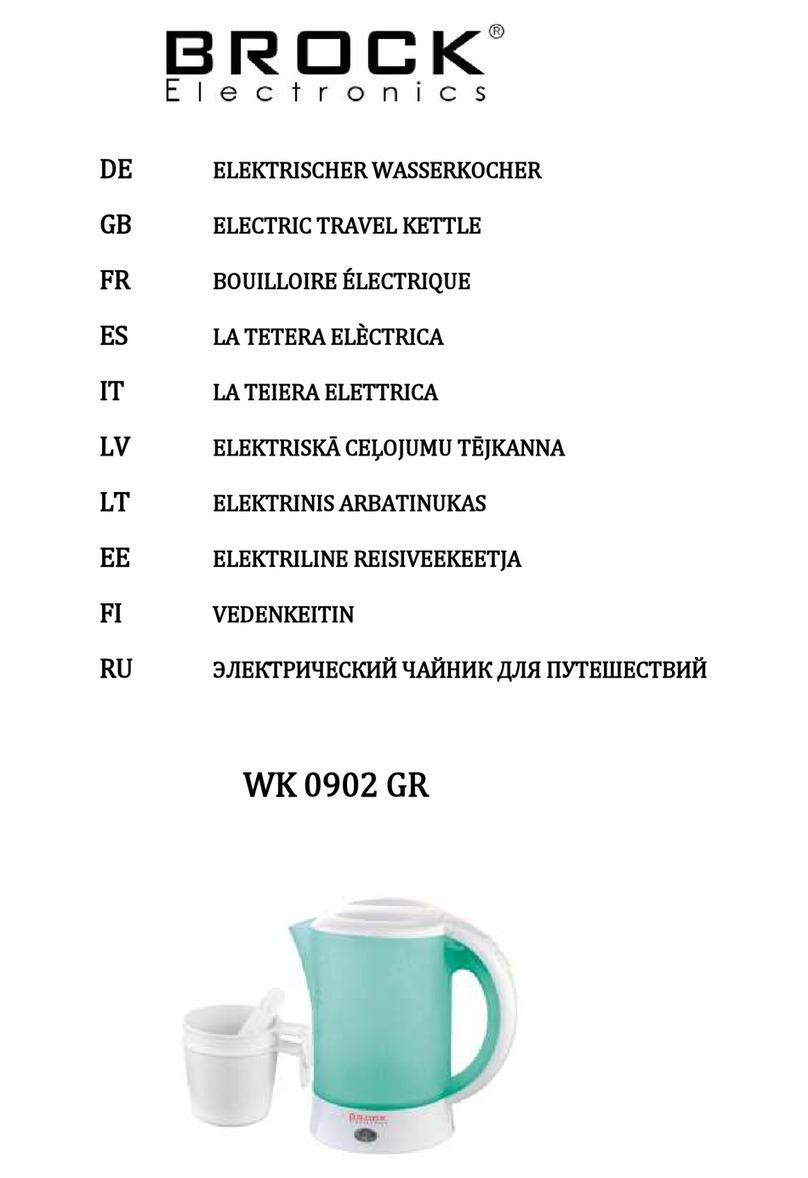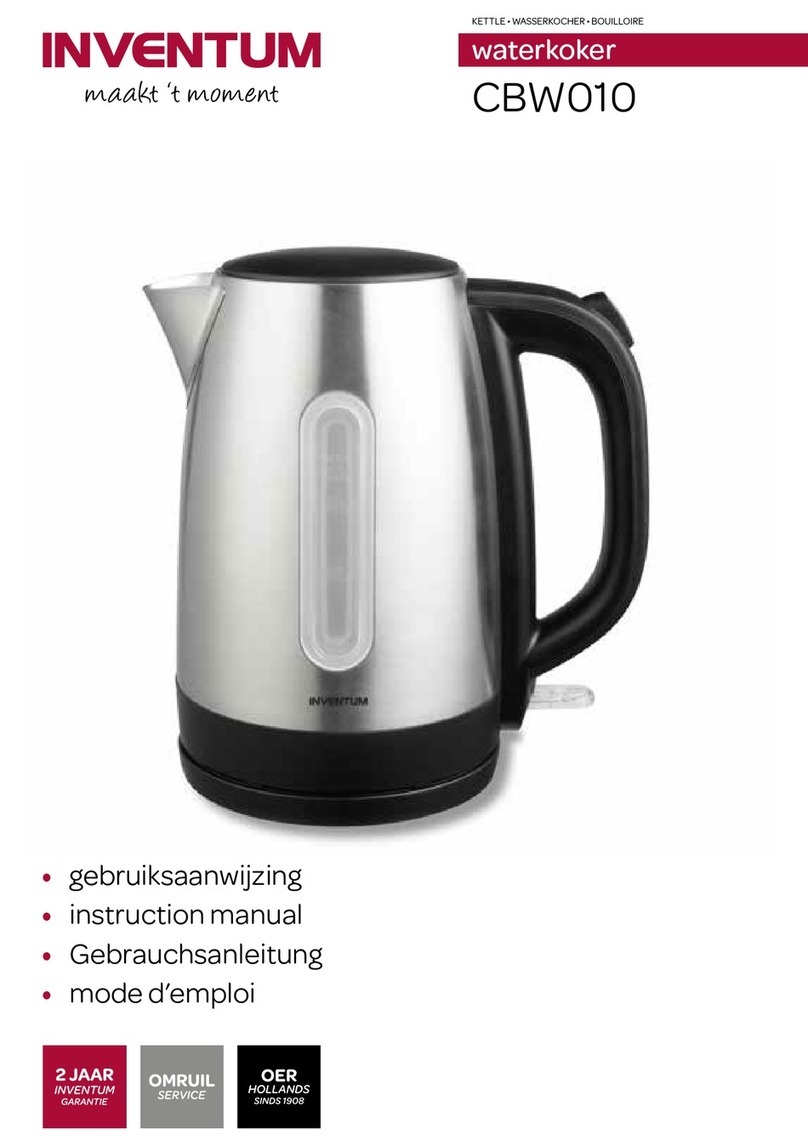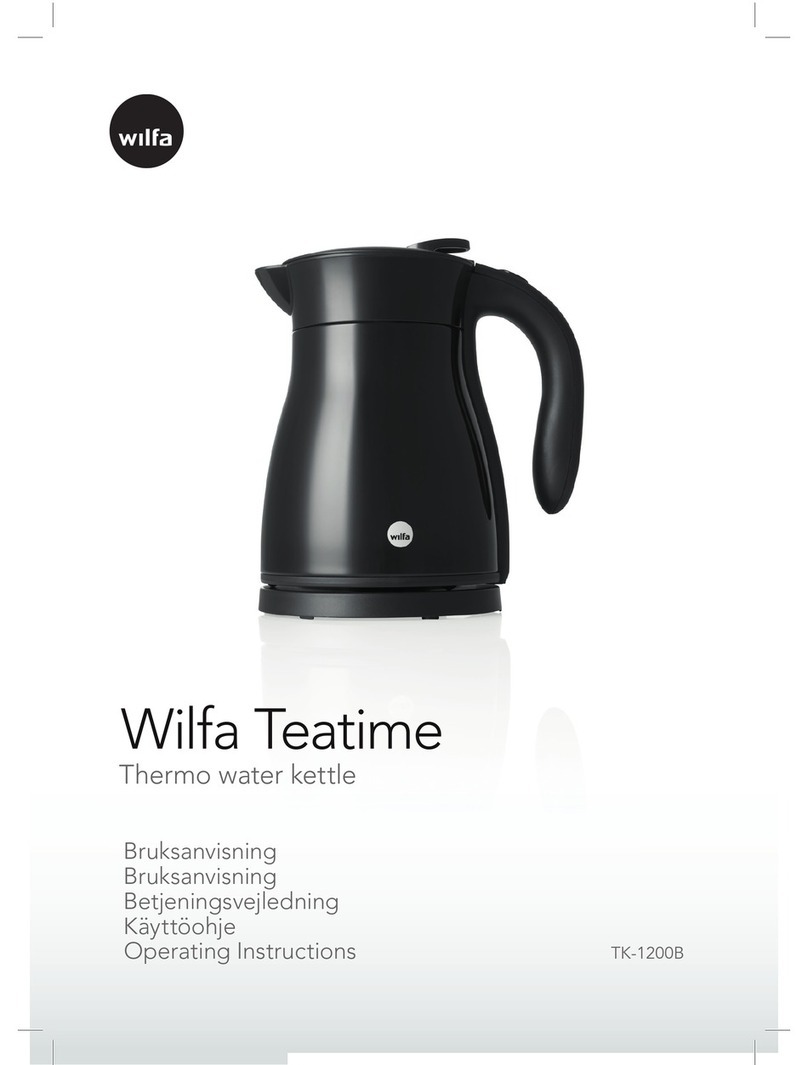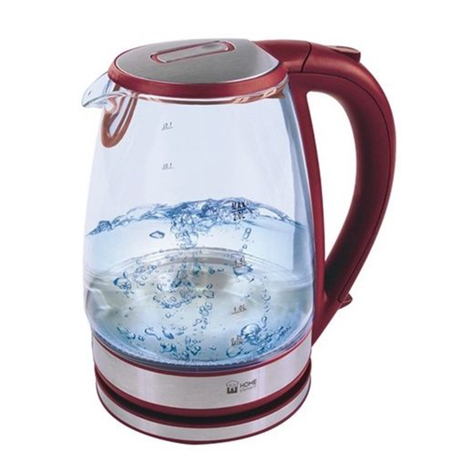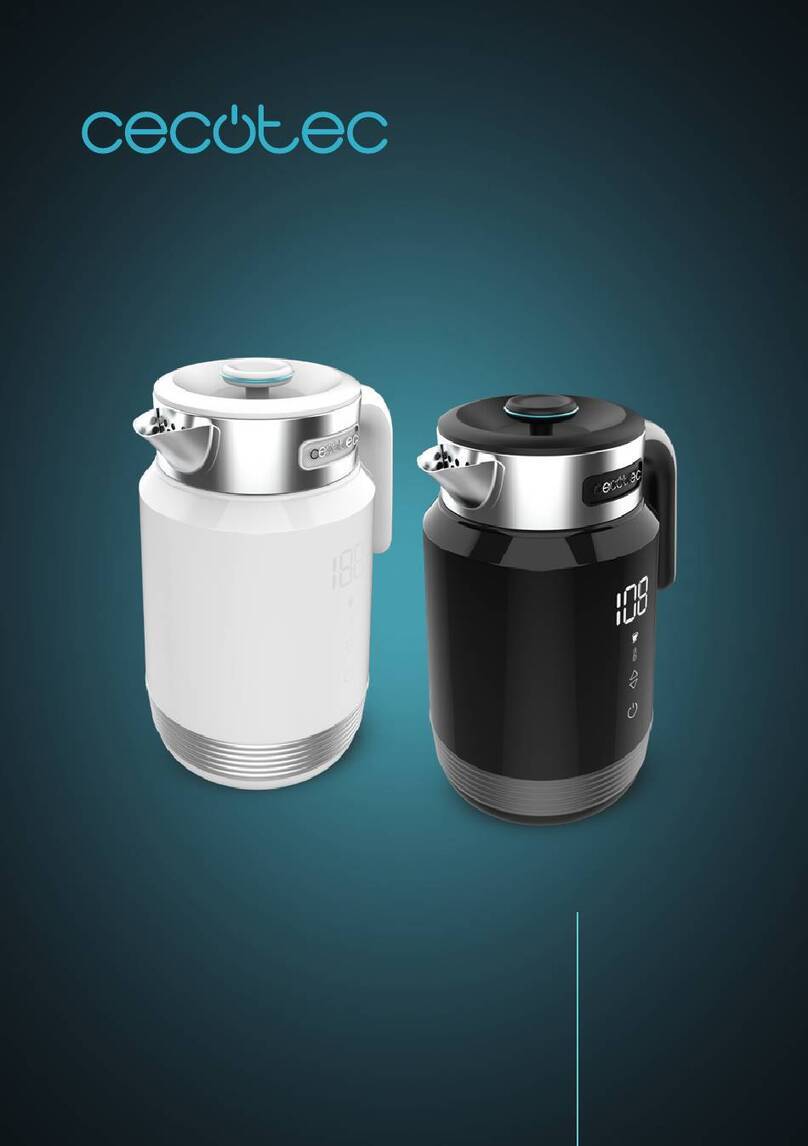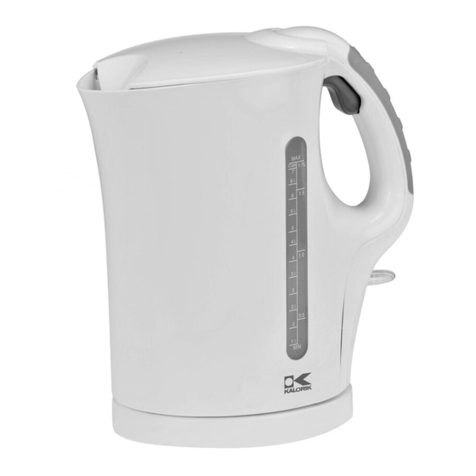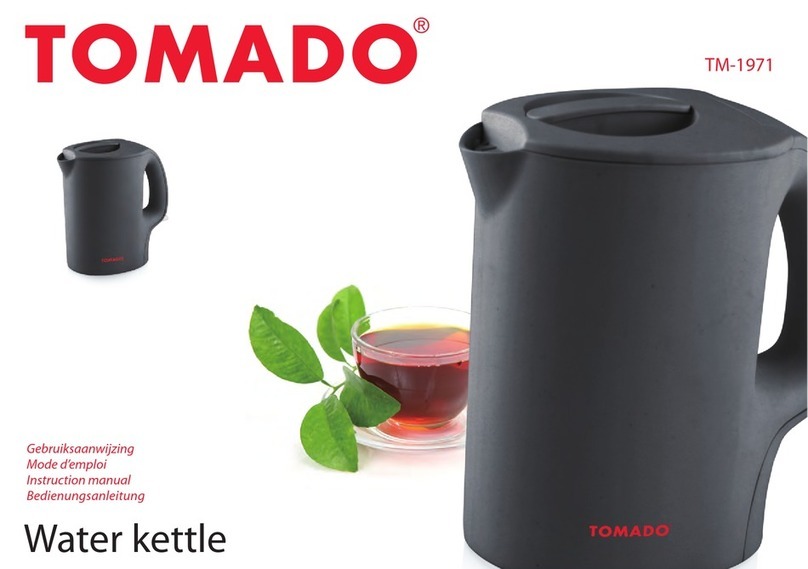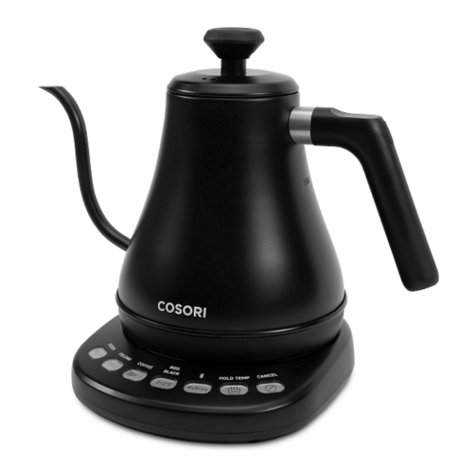
4 5
DE
▪ Dieses Gerät ist dafür bestimmt, im Haushalt und ähnlichen Anwen-
dungen verwendet zu werden, wie beispielsweise:
⋅in Küchen für Mitarbeiter in Läden, Büros und anderen gewerb-
lichen Bereichen;
⋅in landwirtschaftlichen Anwesen;
⋅von Kunden in Hotels, Motels und anderen Wohneinrichtungen;
⋅in Frühstückspensionen.
Das Gerät ist nicht für den rein gewerblichen Gebrauch bestimmt.
Vor der ersten Inbetriebnahme
Die Gebrauchsanweisung aufmerksam lesen. Sie enthält wichtige Hinweise für den Gebrauch, die
Sicherheit und die Wartung des Gerätes. Sie soll sorgfältig aufbewahrt und gegebenenfalls an Nachbe-
nutzer weitergegeben werden.
Das Gerät darf nur für den vorgesehenen Zweck, gemäß dieser Gebrauchsanweisung, verwendet
werden.
Beim Gebrauch die Sicherheitshinweise beachten.
Alle Verpackungen und Aufkleber innerhalb und außerhalb des Geräts entfernen.
Vor Erstbenutzung den Wasserkocher innen gründlich reinigen. Dazu den Deckel durch Drücken der
Taste (Abb. A) am Griff öffnen.
Die nicht benötigte Länge der Anschlussleitung am Boden des Sockelteiles aufwickeln (Abb. B).
Technische Daten
Nennspannung: 220 - 240 V~ 50-60 Hz
Leistungsaufnahme: 2500 - 3000 W
Schutzklasse: I
Sicherheitshinweise
▪ Gerät nur an eine vorschriftsmäßig installierte Schutzkontaktsteckdose anschließen. Zuleitung und
Stecker müssen trocken sein.
▪ Die Anschlussleitung nicht über scharfe Kanten ziehen oder einklemmen, nicht herunterhängen
lassen sowie vor Hitze und Öl schützen.
▪ Den Netzstecker nicht an der Leitung oder mit nassen Händen aus der Steckdose ziehen.
▪ Das Gerät nicht in Betrieb nehmen bzw. sofort Netzstecker ziehen, wenn:
⋅Gerät oder Netzkabel beschädigt ist;
⋅das Gerät undicht ist;
⋅der Verdacht auf einen Defekt nach einem Sturz o. Ä. besteht.
In diesen Fällen das Gerät zur Reparatur geben.
▪ Den Wasserkocher nicht auf heiße Oberflächen z. B. Herdplatten o. Ä. oder in der Nähe der offenen
Gasflamme abstellen, er könnte dabei anschmelzen.
▪ Das Gerät nicht auf wasserempfindliche Oberflächen abstellen. Wasserspritzer könnten diese
beschädigen.
▪ Das Gerät nicht unter empfindlichen Möbeln betreiben, beim Kochen austretender Dampf könnte
diese beschädigen.
▪ Den Wasserkocher niemals ohne Aufsicht betreiben.
▪ Das Gerät nicht ohne Wasser einschalten.
Wichtige Sicherheitshinweise
▪ Bitte Gebrauchsanweisung vor Inbetriebnahme sorgfältig
durchlesen, danach handeln und aufbewahren. Bei Weitergabe
des Geräts an Dritte auch diese Gebrauchsanweisung beilegen.
▪ Diese Geräte können von Kindern ab 8 Jahren sowie von Personen
mit reduzierten physischen, sensorischen oder mentalen Fähigkeiten
oder Mangel an Erfahrung und/oder Wissen benutzt werden, wenn
sie beaufsichtigt oder bezüglich des sicheren Gebrauchs des Gerätes
unterwiesen wurden und die daraus resultierenden Gefahren ver-
standen haben. Kinder dürfen nicht mit dem Gerät spielen.
▪ Reinigung und Benutzer-Wartung dürfen nicht durch Kinder durchge-
führt werden, es sei denn, sie sind älter als 8 Jahre und beaufsichtigt.
▪ Kinder dürfen nicht mit dem Gerät spielen.
▪ Bewahren Sie das Gerät und seine Zuleitung außerhalb der Reich-
weite von Kindern unter 8 Jahren auf.
▪ Den Wasserkocher nur mit dem dazugehörigen Sockel betreiben.
▪ Wird das Gerät überfüllt oder mit nicht geschlossenem Deckel
betrieben, könnte kochendes Wasser herausspritzen.
▪ Den Wasserkocher und den Sockel nicht in Wasser tauchen.
▪ Wenn die Anschlussleitung dieses Gerätes beschädigt wird, muss sie
durch den zentralen Kundendienst des Herstellers oder eine ähnlich
qualifizierte Person ersetzt werden. Durch unsachgemäße Repara-
turen können erhebliche Gefahren für den Benutzer entstehen.
▪ Achten Sie darauf, kein Wasser auf den Sockel zu verschütten.
▪ Vorsicht, Verbrennungsgefahr: Die Temperatur der berührbaren
Oberflächen kann sehr heiß werden. Auch nach dem Ausschalten
des Gerätes bleiben diese noch einige Zeit heiß.
▪ Reinigen Sie nach Verwendung des Gerätes alle Flächen/Teile, die
mit Nahrungsmitteln in Berührung gekommen sind. Bitte befolgen
Sie die Hinweise im Kapitel „Reinigung und Pflege“.
▪ Das Gerät nur gemäß dieser Anleitung verwenden. Unsachgemäßer
Gebrauch kann Stromschlag oder andere Gefahrenmomente zur
Folge haben.

